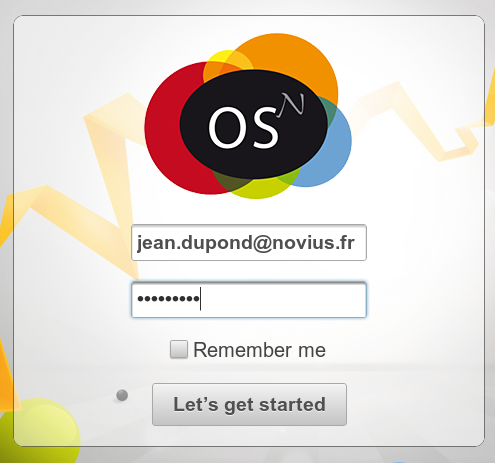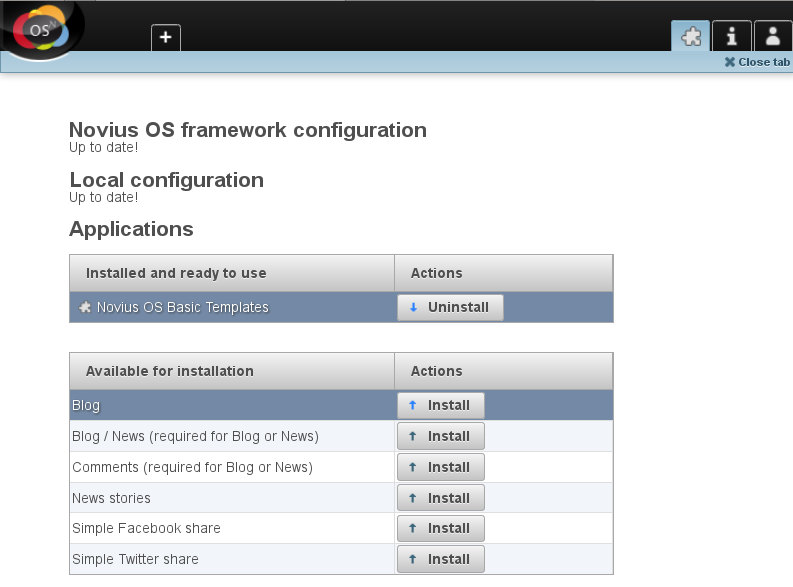Setup wizard¶
You’ve followed the first part of the installation process. Novius OS files are now installed, the server is set-up and you accesses http://your.domain/novius-os/. You’ve done the hardest, now comes the easy part :-).
Step 1: Checking requirements¶
This step should be straightforward if you’ve installed Novius OS following the quick procedure. In other cases, don’t worry if a lof of red comes up! Your website just needs writing permissions in some directories. This step gives you the explanations and the commands to run to fix everything.
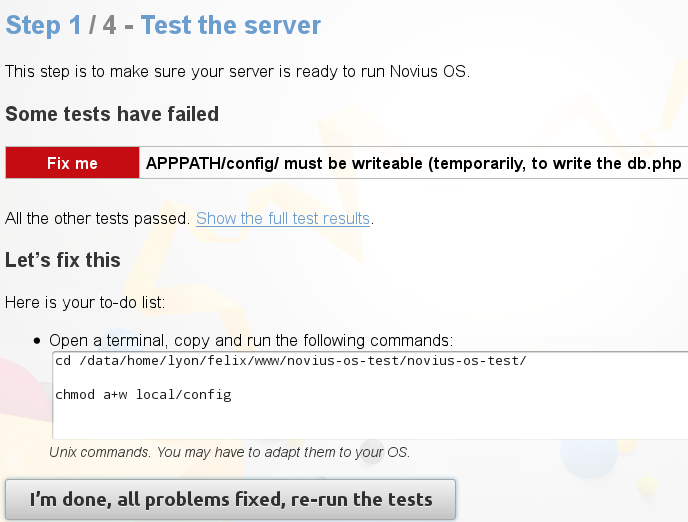
To fast-track this step, just copy the commands’ summary given at the bottom of the page and copy them in a terminal. You’re done!
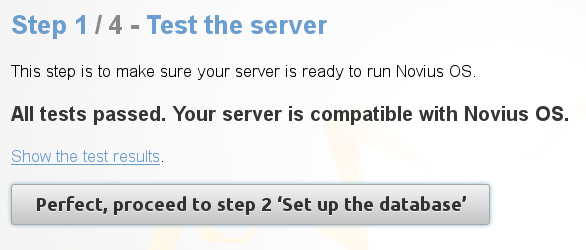
Step 2: Setting up the MySQL database¶
You need a MySQL database including a user with the required rights. For shared hosting, your provider must have given you these details. In other cases, here is an example for a localhost database:
CREATE DATABASE `your_db_name` DEFAULT CHARACTER SET utf8 COLLATE utf8_general_ci;
GRANT ALL PRIVILEGES ON `your_db_name`.* TO 'your_user_name'@localhost IDENTIFIED BY 'your_password';
FLUSH PRIVILEGES;
Fill in the four required fields according to your database configuration.
This step will create two files local/config/db.php and local/config/crypt.php and—more importantly-the tables needed for Novius OS to run.
Step 3: Creating the first administrator account¶
Fill the required fields for create the first administrator account of your Novius OS. Email and password will be used for the first connection. Those informations can be modified later in back-office.
Step 4: Finishing the installation¶
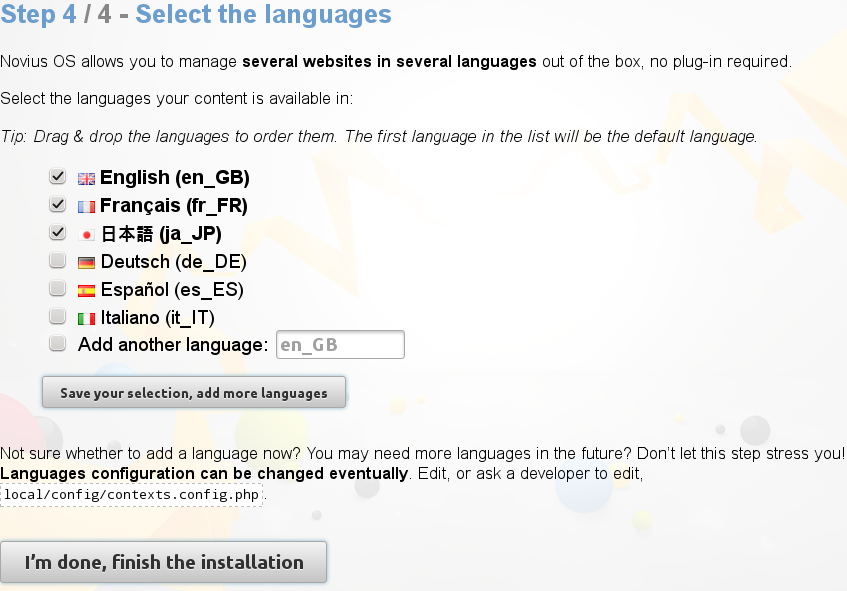
Warning
We urge you to follow the recommendation of this page.
On setting contexts, refer to the principles and API documentation.
Signing in and out¶
To sign out, click your name in the top-right corner. A menu shows:
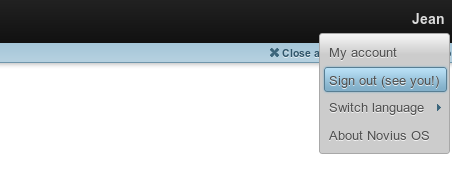
You’re redirected to the sign-in form.
